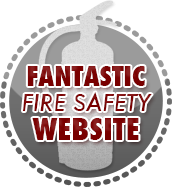Fire Extinguisher : 101
CPR
| Home |
| About Fire Extinguishers |
| Using a Fire Extinguisher |
| Fire Prevention |
| Fire Hazards |
| First Aid for Fire |
| Financial Protection |
| Biggest Fires in History |
| Firefighters |
This site was voted:

by onlinefiresciencedegree.org
(scroll to 74 on the list)
This page is intended to provide individuals with general information pertaining to CPR techniques related to smoke exposure. |
One of the first things to do in an emergency is to contact the professionals. But until they arrive, it is important to know what you can do to help. Cardio Pulmonary Resuscitation or CPR, the term most people are familiar with, is used to bring people back to life. Essentially, you are breathing life back into a person who has lost consciousness. CPR can be used to help victims of smoke inhalation until the paramedics arrive. However, CPR techniques are different for adults, children and infants.
CPR For Adults:
 If you find the
victim is not responding, call 911 and then return to the victim.
If you find the
victim is not responding, call 911 and then return to the victim.- Tilt the victim’s head back and listen for any breathing. If they are not breathing or not breathing normally, pinch their nose and cover their mouth with yours. Blow until you see the chest rise and fall. Give two breaths of approximately two seconds each.
- If they are still not breathing, coughing or moving, start chest compressions. Push 1.5 to 2 inches on the chest about 15 times (between the nipples).
- Until the paramedics arrive, continue with two breaths and 15 chest compressions.
CPR for Children
between 1 and 8 years old:
CPR for children is similar to that of adults except for the following
differences: During chest compressions, use the heel of one hand and press
the sternum down to approximately 1 to 1.5 inches.
- Give one full breath followed by five chest compressions.
- Perform CPR for one minute and then call 911.
CPR for Infants less than 1 year old:
- Shout and tap the child on the shoulder. If he/she does not respond to your voice or touch, then position the infant on its back
- Lift the chin so the head is slightly tilted (but not too far).
- If the infant isn’t breathing, cover the baby’s mouth and nose with your mouth and administer two small, gentle breaths. The breaths should be 1.5 to 2 seconds long. The baby’s chest should rise with each breath given.
- Give five chest compressions gently. Press down one-half to one inch in the center of the chest, half an inch below the nipples.
- Repeat with one breath and five compressions. After a minute of repeated cycles, call 911 and continue CPR treatment until the paramedics arrive.